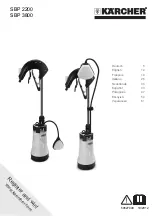
8
MILL
Note: The accompanying diagrams show you the max-
imum dimensions of the machines with the table, ram,
etc., fully extended in all possible directions. When
spotting the machine be certain to leave room not only
for the machine itself, but also for operator clearance
and clearance for workers servicing the machine, and
any unusual sizes of workpieces that might extend off
the machine’s table.
9. When the machine is over its anchors, level the ma-
chine using shims under the corners needing them.
The machinist’s level used for leveling should be
placed on the table. The table is the reference surface
for both side-to-side and fore-and-aft leveling. Be cer-
tain you get it level in BOTH directions.
10. When the machine is level, secure the base to the
anchor
system.
IMPORTANT: Before attempting to raise the mill head,
refer to Mill Head – Left/Right Adjustment in the Adjust-
ments section for procedures to safely raise and set up
the mill head.
11. Loosen the four hex head nuts (see A, Figure 20)
about 1/4 turn each (counterclockwise), just enough to
allow rotation of the head.
12. While assisting the worm mechanism by putting
upward pressure on the motor by hand, use the
wrench supplied with the machine to turn the worm nut
and raise the head to upright position.
13. Tighten the headbolts slightly — not torqued — just
snug.
14. Using mineral spirits or other cleaning solvent, clean
all of the rust proofing from where it may have been
applied. This is important; moving the table or any
other components before removing the rust proofing
will only put rust proofing where you don’t want it.
!
Mill must be supported equally under all four
corners. Failure to comply may cause the column to
twist and put a bind in the table ways.
Some of the following steps may have already been per-
formed on the machine. If so, ignore the instructions related
to those particular steps. Otherwise, perform them in the
order listed, referring to Figure 9 for any clarification.
15. Install the table traverse and cross-feed cranks on
their respective shafts using the nuts on the shafts to
secure the cranks.
16. Remove any rust proofing from the drawbar and its
washer, and put the drawbar with washer installed into
the spindle center through the top of the machine.
17. Slide the fine feed handwheel over the handwheel hub
and push it back until its rollpin engages the hole in
the hub and the wheel is flush with the hub surface.
18. Put the coarse feed handle on the feed shaft and tap
it lightly until its roll pin engages a hole in the hub and
it is flush against the hub surface.
19. Unwrap and clean the knee crank and install it on its
shaft.
20. Install the rubber way covers at front and behind the
table.
Summary of Contents for ETM-949EVS
Page 9: ...9 ETM 949 ETM 949EVS Fig 2 ETM 949 DIMENSIONS...
Page 12: ...12 MILL Fig 5 Fig 4 Motor Switch...
Page 25: ...25 ETM 949 ETM 949EVS TABLE ASSEMBLY ETM 949 ETM 949EVS...
Page 48: ...48 MILL 14 0 WIRING DIAGRAM ETM 949...
Page 49: ...49 ETM 949 ETM 949EVS WIRING DIAGRAM ETM 949EVS E type inverter...
Page 50: ...50 MILL WIRING DIAGRAM ETM 949EVS B type inverter...
Page 51: ...51 ETM 949 ETM 949EVS NOTES...
Page 52: ...52 MILL NOTES...









































